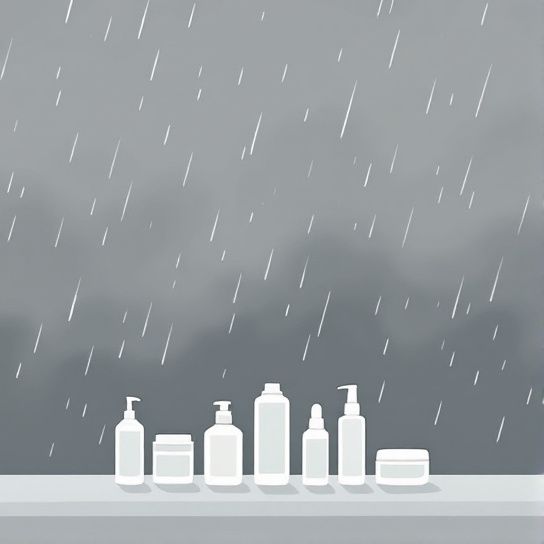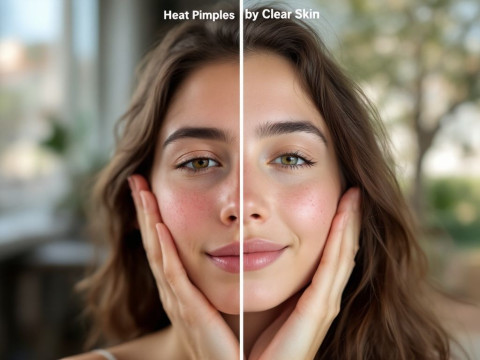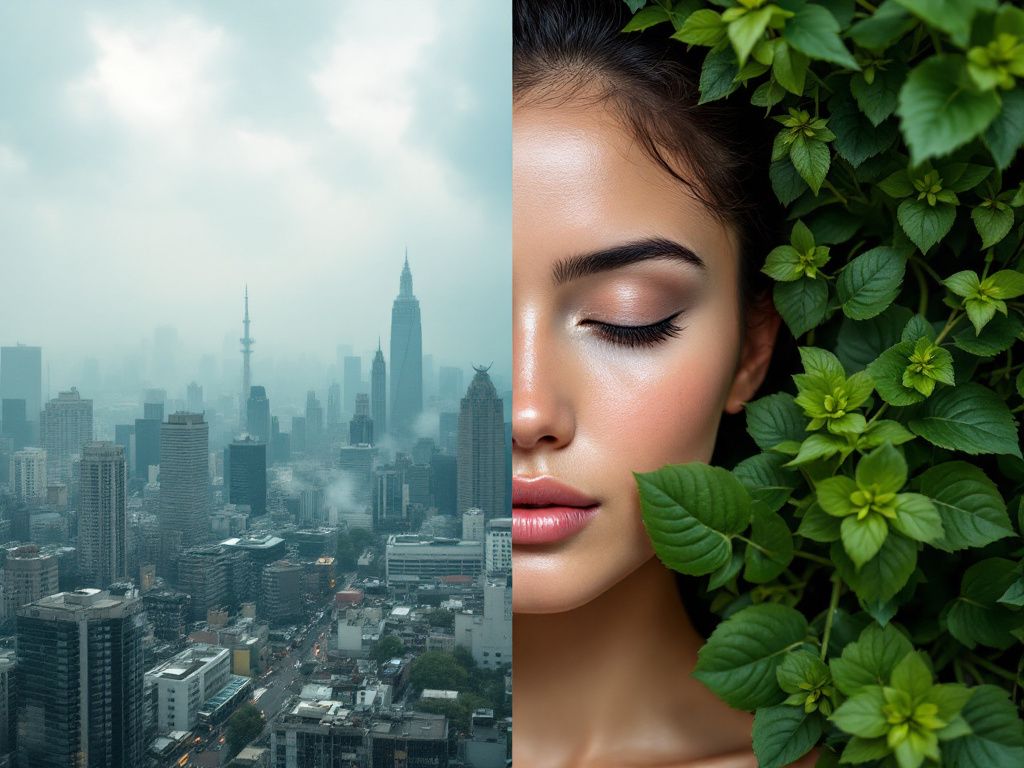Ever found yourself outside, enjoying a day amongst nature, only to return home with an unwelcome zit or that irritating itchy feeling on your skin? You might be encountering what folks are calling “climate acne.” If it sounds like something out of a sci-fi novel, believe me, it feels like it too. This pesky issue isn’t just a teenager’s nightmare but a reality for anyone living where air quality is less than perfect.
Now, why would climate—our precious air quality—turn on us? That’s what we’re diving into today. Think of this as your comprehensive (but totally chatty) guide on how air quality, pollution, and all those not-so-fun particles floating around impact your skin. Plus, we’ll chat about ways you can protect yourself and reclaim that lovely skin of yours.
What’s the Deal With All This Climate Acne?
Climate acne—it’s a real buzzword these days, isn’t it? But this isn’t just another term thrown around lightly. At its core, climate acne refers to skin breakouts or irritations that are directly tied to environmental pollution. Our skin acts like a shield, bravely standing guard against the outside elements. But when those elements include swarms of pollution particles, sometimes our defenses falter.
The Air Quality-Skin Connection
Let’s break it down. Pollution in the air can carry tiny particles—meaning those microscopic bits you can’t see but sure can ‘feel’ later. Known as Particulate Matter (PM), these small guys love to sneak into our skin. Once there, it’s like they set up camp, irritating pores, or worse, causing flare-ups like *acne* or redness.
You ever notice your skin feeling a tad grimy after a day out in heavy traffic or near construction? That’s pollution making itself at home. It’s a skin dilemma as air quality dips due to industrial emissions, car exhausts, and even those seemingly harmless outdoor hobbies in urban settings.
The Role of Climate Change
And if we widen the lens a bit… there’s climate change. As the earth’s climate warms, so does the intensity of pollutants. Not to mention, dry spells and surging humidity affect the skin’s oil production, giving a literal rise to climate acne. It’s all about balance, honest! Sometimes our skin can feel like another little planet needing its ecosystem care.

Taking Action: Armor Up Against Pollution
Enough with the gloom—let’s talk action. While completely avoiding pollution might feel as realistic as turning off gravity, we can absolutely arm ourselves and our skin to face it head-on.
Step 1: Clean Slate, Clear Skin
First up, cleansing. Not just any rinse-under-the-tap kind of cleanse. We’re talking diligent, thorough cleansing post outside adventures. Find yourself a medium gentle daily cleanser. Trust me on this one—it’s your first layer of defense.
When you wash off the day’s grime, aim for cleansers that target pollutants. Look for labels mentioning antioxidants like vitamin C or ingredients like activated charcoal known for their detoxifying powers.
Step 2: Breathing, Balance, and Moisturize
Your skin loves a good drink—so hydrate in and out. After cleansing, it’s facial fluids time. Pick serums and moisturizers infused with hyaluronic acid to trap hydration. It all locks in those good vibes and acts as a kind of slick barrier against pollution stakes.
- Hyaluronic Acid: Retains moisture, keeping the skin smooth.
- Antioxidants: Vitamin E and green tea can neutralize pollution ‘free radicals.’
Step 3: The Protector Called SPF
Sun protection! I know what you’re thinking, “Can SPF really help with pollution?” Yes, it can. Alongside battling UV rays, a good broad-spectrum sunscreen offers ulterior motives in fighting pollution particles too. Focus on sunscreens that brag about a PA rating—it fights UVA damages— double points there!
Step 4: Shield with the Right Ingredients

It’s all about those add-ons—ingredients that could help bolster your skin’s fortitude. These are your sacred grails:
- Niacinamide: This reduces inflammation and repairs Leaky skin barriers.
- Ceramides: They help repair your skin’s natural barrier—which pollution crumbles.
Simple Protective Habits That Make a Difference
Sometimes, it’s those daily practices that save the day. You don’t need to overhaul the whole routine, just sprinkle in some smart moves.
- Double cleansing in cityscapes: Slide in an extra clean at night using a micellar water or gentle oil cleanser.
- Hat Culture & Fabric Friends: Grab a cap or a scarf to shield your precious face physically.
A Breath of Fresh (Indoor) Air
Don’t forget your oasis—the interiors. Indoor air quality doesn’t always come up in a skin-chat, but it’s crucial. Use air purifiers to maintain lower particulate levels indoors. Open windows during low-traffic times if outside air isn’t catastrophic.
Rapid Reactions: Calm and Soothe Climatic Flare-Ups
What about when crisis hits, and your skin’s revolted into full-blown climate acne? Cue the TLC!
Soothing Treatments Worth Trying
- Soothing Masks at Hand’s Reach: Sheet masks or clay masks hydrated with cucumber or chamomile instantly cool the rebellion.
- Overnight Healing: Light-sleep oils containing tea tree or aloe vera calm overnight distress.
- DIY Quick Fixes to Test: A homemade concoction of oatmeal and honey soothes inflammation, crafting a mini-spa you’d love for any emergency.
Circling back, keeping a climate-acne prone treatment handy repairs the breach quicker.

Product Overload: Know When It’s Time to Step Back
Amidst all solutions, there lies a simple plea—know when to back down over-treatment. Yes, helpful active ingredients, but steer clear from bombarding your skin with new trials every day. Allow time to adjust and breathe.
Layering Back to Nature: Natural Practices Fortifying Against Pollution
Just for fun, ponder incorporating some natural allies. Living plants around your space not only boost aesthetics but improve air and—by proxy—skin health.
Key Green Allies Indoors
- Aloe Vera: Acts as natural humidifiers and heals when applied.
- Spider Plants: Traps pollutants creating more breathable (skin-favoring) air.
Conclusion: Crafting Your Personalized Shield
Skin care isn’t simple math—definitely not when climate’s in the equation. It’s more dynamic, somewhat personal, and subtly situational. An effective air quality skin guide blends various strategies and practices that suit you.
From recognizing symptoms of climate acne to trying safe, effective remedies, every step tilts towards healthier skin resilience. Mix, match, experiment, and don’t rush—skin can be a patient beast.
If there’s any takeaway, it’s this: treating skin issues like climate acne takes homage to environmental introspects while pairing them with simple, loyal skincare rituals. It’s definitely more juggle and just under a fair dose more manageable than it seems. Let’s get that air feeling a little fresher and our skin loving, living its best life yet.
Frequently Asked Questions
How does climate change impact acne?
Climate change can exacerbate acne through several mechanisms. Warmer temperatures and increased UV radiation can stimulate the growth of *Cutibacterium acnes* (C. acnes), a bacteria associated with acne. Additionally, higher temperatures increase sebum levels, and humidity can cause pilosebaceous unit swelling, leading to acne flares[2][4].
What role do environmental pollutants play in acne?
Environmental pollutants, such as air pollution, can significantly impact acne by increasing oxidative stress and altering the skin’s lipid film. This can lead to increased sebum levels and a higher number of inflammatory and non-inflammatory acne lesions. Pollutants like particulate matter (PM 2.5 and PM 10) and nitrogen dioxide contribute to these adverse effects on the skin[1][4].
How do seasonal changes affect acne?
Seasonal changes can influence acne due to variations in temperature and humidity. In humid environments, oil is trapped on the skin’s surface, creating a conducive environment for acne-causing bacteria to thrive. Conversely, dry and cold weather can cause the skin to overproduce oil, leading to winter acne. Adjusting skincare routines according to these seasonal changes is crucial for managing acne[5].
What skincare practices can help mitigate the effects of climate on acne?
To mitigate the effects of climate on acne, it is important to maintain a consistent skincare routine. This includes using gentle cleansers, exfoliating regularly, applying non-comedogenic sunscreen and moisturizer, and adjusting skincare products according to seasonal changes. Additionally, protecting the skin from UV radiation and managing stress can help in preventing acne flares[1][4][5].
References










